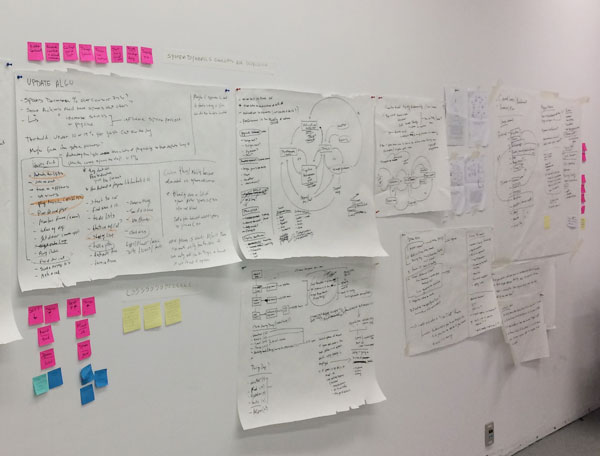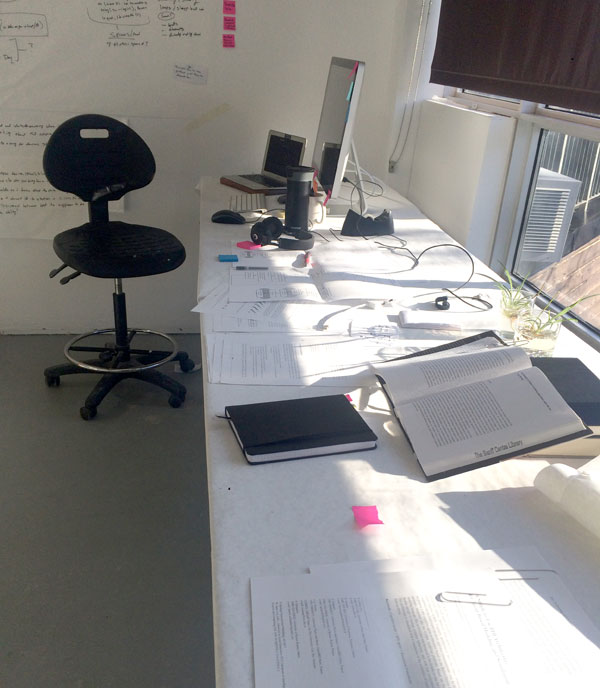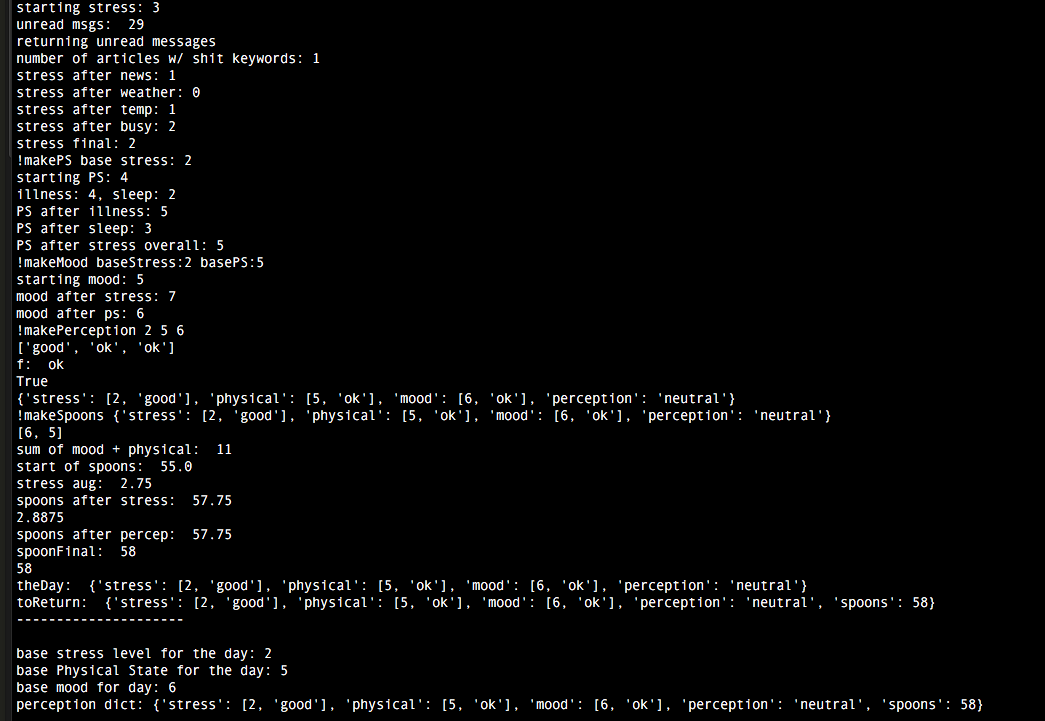About
Sad Home (Depressed Alexa 1.0) is a project that explores the concepts of system dynamics as it could be applied to depression. A custom system generates spoons (resiliance), moods, and perceptions for an Alexa Echo. As the device is used, its spoons are depleted. As the system dynamically updates itself Alexa employs an avoidant coping strategy towards tasks by trying to frustrate the user into qutting with a yes / no dialog flow.
Video
Details
SAD Home was developed over a five week residency at the Banff New Media Institute. The entire system includes the device, its peripherals (Hue Lights, Blender, Record Player), an in house server made from a Raspberry Pi that included webhooks, proxies, and channels for MQTT, and a travel router. The system is built to be easily installed in different locations by attempting to keep as many protocols contained to local communication as possible.
The device's mood engine is written in Python, and every morning launches a program that looks at real life data from my own calendar, the local weather, a randomly generated pain and sleep score, and other items, which it then uses to generate its mood, stress level, and spoons.
The dialog flow is based on a simple yes/no structure and wrapped around the context of home control. As spoons are depleted the device's mood will alter, and the device will try and convince the user to stop using it, in the hopes of conserving its spoons.
The paper for this project was originally published in Virtual Creativity and can be read here (pdf).
You can also look at the Github Repo.
There's also my research blog category about this project.
Or you can visit my residency flickr album.
Documentation


